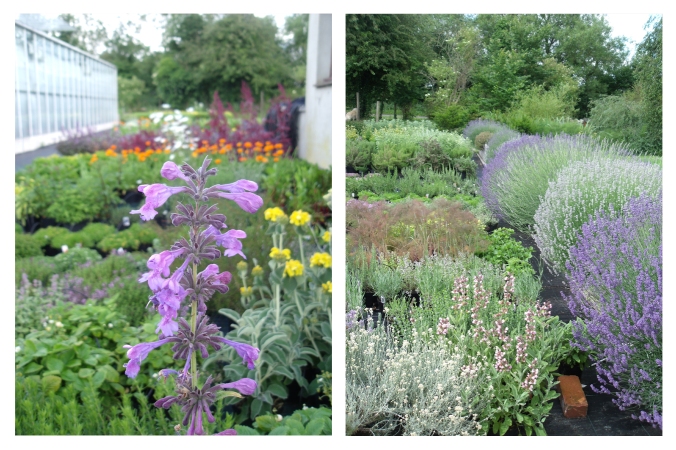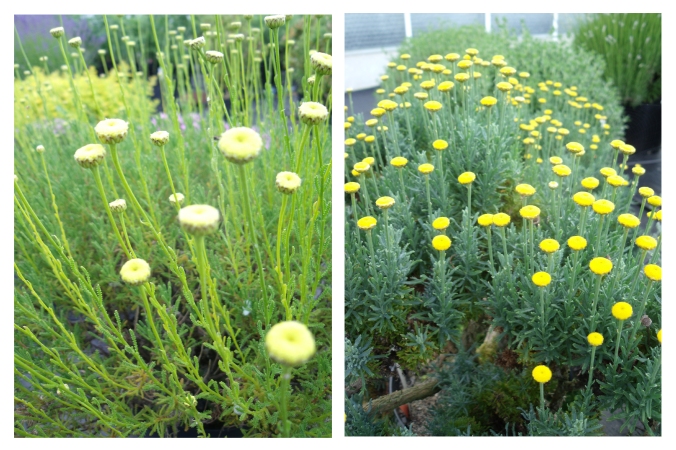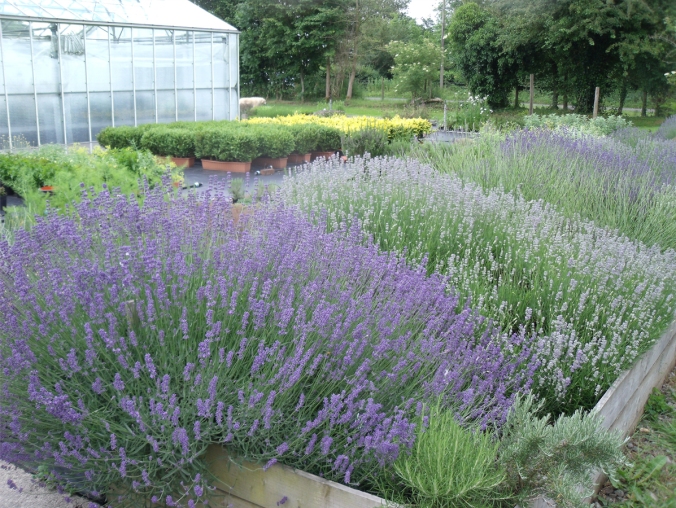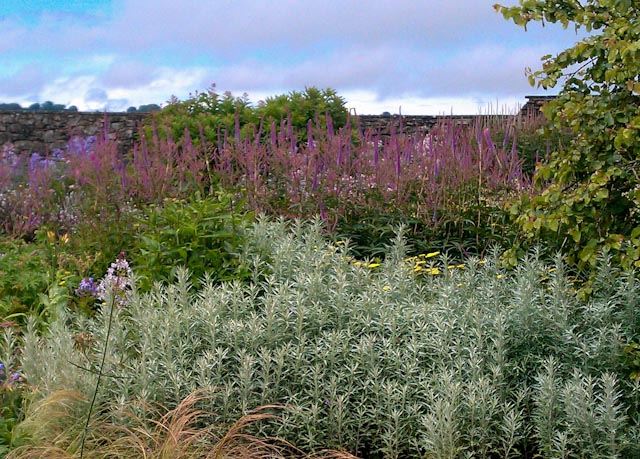June: you’re expecting the fragrant smell of freshly mown grass and the warmth of the sunshine on your back, the drone of busy bees, perhaps a dip in the English Channel if you’re really brave (or daft, or very well insulated). But it’s definitely chilly for June and there’s not much doing on the sunbathing front. Luckily, there is plenty to occupy you in the herb garden (so much more satisfying and beneficial than roasting your skin).
The farm is looking beautiful, and cooler weather at this time of year can help to prolong the flowering period, especially if you’re conscientious with your dead-heading. We’ve had a drop of rain (at last) and a glimmer of sunshine, and the herbs are happy. There’s so much in flower right now that our next Open Day visitors are in for an absolute treat in a week’s time.

Jekka's Herb Farm in early June 2011
Wandering the hardstanding and polytunnels is an aromatic, sensory feast at this time of year but it doesn’t happen by chance alone. Jekka and the team are always constantly watering, weeding and feeding, propagating, potting and pruning. This is no time to rest on your laurus nobilis in the herb garden. For example, these Santolina, Cotton Lavenders ‘Primrose Gem‘ and ‘Small-Ness‘ look stunning right now…

Cotton Lavenders, 'Primrose Gem'...and 'Small-Ness'
..but once they’ve finished flowering, it’s essential to cut them back to maintain the attractive, bushy shape and good health of the plant. These elegant, aromatic evergreens, a popular choice for Elizabethan knot gardens, love a sunny spot and, preferably, a sandy soil. If your soil is clay, then you’ll need to break it up with a good dose of horticultural grit and organic mulch – or plant in a pot.
The same goes for Lavandula, Lavender. Keep Lavender (and this goes for both the hardier varieties like Lavender Folgate…

Lavender Folgate, happy as can be
and the less hardy species such as Lavender Willow Vale) at its happiest, by planting in well drained soil in a sunny spot, and once it’s finished flowering, trim back (but NEVER into the old wood – this would be tantamount to murder). You may get a second flowering later on (and dry those flower trimmings for lavender sachets, sorbets, sugar flavouring, herb pillows and soothing scented baths).
Then there’s TLC for the summer salad herbs like ‘Sir Basil‘ as Jekka refers to this somewhat self important herb who must be watered in the morning but not in the evening please, as he hates going to bed with wet roots (understandable) – he also loves the summer sun, but protection from the midday sun (fussy).
Coriander also prefers an early tipple, and is happiest in a semi shady spot – if it’s left in full sunshine, the chances are it will bolt, flower and go to seed before you’ve even had the chance to make your Mexican Enchiladas (see Jekka’s Herb Cookbook), ditto Dill, ditto Salmon, Dill and Potato Soup.
Once these edible annual herbs finish flowering (and there are many – Amaranth, Golden Mustard , Salad Rocket, Mexican Tree Spinach – you’ll have to do a search on our website for the rest because life’s too short), if you let them, they’ll very often set seed and pop up again next spring when you least expect it – Red Orach, for example, is a prolific self seeder.

Red Orach - prolific self seeder
It does look striking in the garden, and the young leaves can be used in salads (wilt the more mature ones like spinach), but if you don’t want a gardenful next year then either collect the flowerheads quickly or don’t plant it in the first place!
Anyway, must get back to cutting back. Come along to our next Open Days, 17th-19th June, when, if you’d like some more advice, we’ll happily chat all-things-herbs with you all day long!







